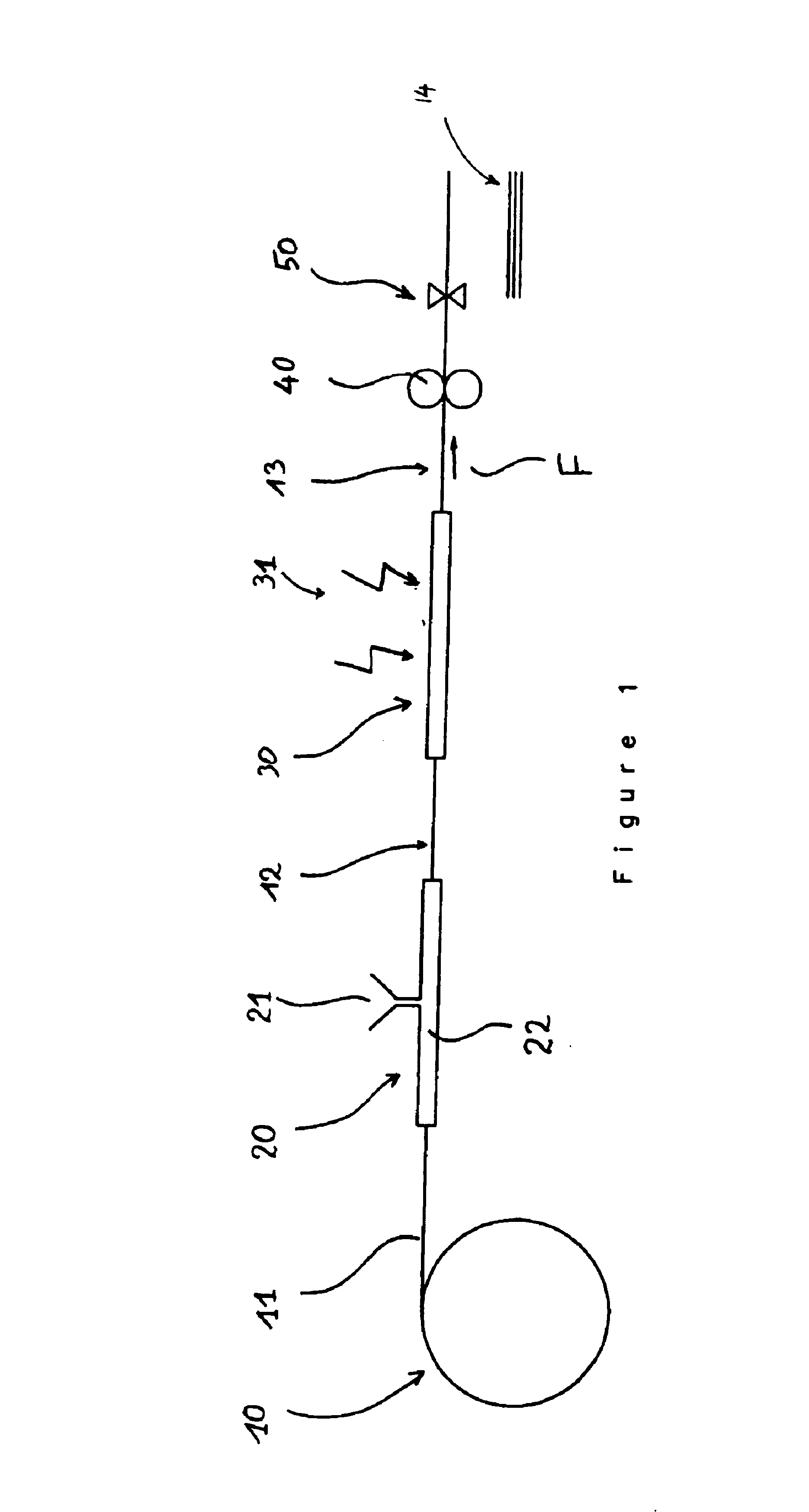Process for manufacturing highly stressed composite parts
- Summary
- Abstract
- Description
- Claims
- Application Information
AI Technical Summary
Benefits of technology
Problems solved by technology
Method used
Image
Examples
Embodiment Construction
FIG. 1 shows a reel 10 containing a spun yarn 11 which, in the example illustrated, is formed of glass fibers. There is then shown an impregnation device 20 comprising a reservoir 21 containing a composition based on a hardenable resin and a -photoinitiator appropriate to the irradiation by which said composition will be treated. The impregnation device 20 comprises an impregnation chamber 22. There results from this a pre-impregnated material 12 which is introduced into a prepolymerization device 30, in which the pre-impregnated material 12 is prepolymerized by ionizing irradiation, the treatment being carried out with oxygen excluded. As for the irradiation 31 to which the composition is exposed, its wavelength is typically less than 450 nanometers, preferably between 300 nm and 450 nm. For example, an ultraviolet lamp may be used. Rollers 40 drive the precomposite 13 obtained in the direction of the arrow F. Finally, shears 50 make it possible to take lengths 14 from the continuo...
PUM
| Property | Measurement | Unit |
|---|---|---|
| Temperature | aaaaa | aaaaa |
| Temperature | aaaaa | aaaaa |
| Temperature | aaaaa | aaaaa |
Abstract
Description
Claims
Application Information
 Login to View More
Login to View More - R&D
- Intellectual Property
- Life Sciences
- Materials
- Tech Scout
- Unparalleled Data Quality
- Higher Quality Content
- 60% Fewer Hallucinations
Browse by: Latest US Patents, China's latest patents, Technical Efficacy Thesaurus, Application Domain, Technology Topic, Popular Technical Reports.
© 2025 PatSnap. All rights reserved.Legal|Privacy policy|Modern Slavery Act Transparency Statement|Sitemap|About US| Contact US: help@patsnap.com



